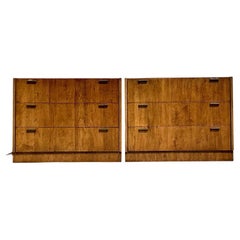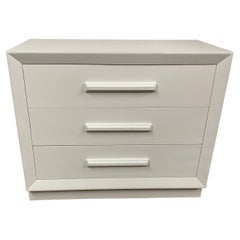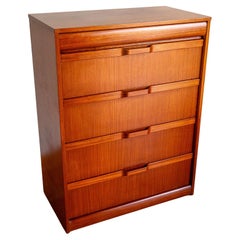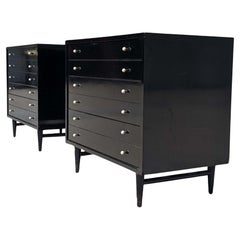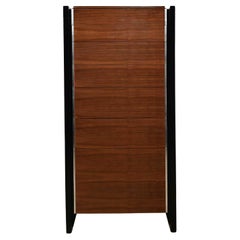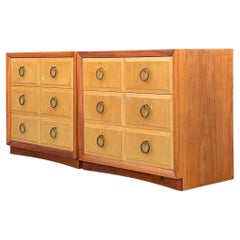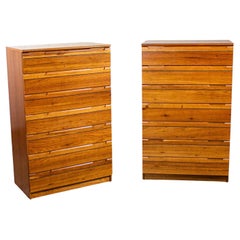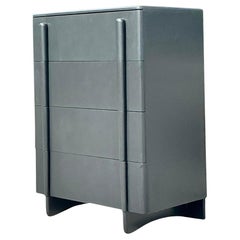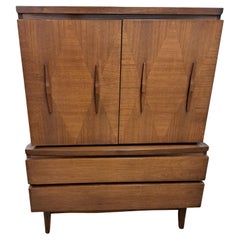Mcm Chest Of Drawers
Late 20th Century American Commodes and Chests of Drawers
Wood
Vintage 1960s North American Mid-Century Modern Commodes and Chests of D...
Wood
Mid-20th Century British Mid-Century Modern Commodes and Chests of Drawers
Teak, Sapele Wood
Mid-20th Century American Mid-Century Modern Commodes and Chests of Drawers
Lacquer
Mid-20th Century American Mid-Century Modern Commodes and Chests of Drawers
Aluminum
Mid-20th Century American Mid-Century Modern Commodes and Chests of Drawers
Metal
Mid-20th Century Brazilian Mid-Century Modern Commodes and Chests of Dra...
Hardwood
Mid-20th Century American Mid-Century Modern Commodes and Chests of Drawers
Wood, Lacquer
Mid-20th Century American Mid-Century Modern Commodes and Chests of Drawers
Wood
Vintage 1960s American Mid-Century Modern Commodes and Chests of Drawers
Wood
Vintage 1950s American Mid-Century Modern Commodes and Chests of Drawers
Maple
Vintage 1950s American Mid-Century Modern Commodes and Chests of Drawers
Maple
Vintage 1970s American Mid-Century Modern Commodes and Chests of Drawers
Brass
Mid-20th Century American Mid-Century Modern Dressers
Walnut
Vintage 1960s American Mid-Century Modern Cabinets
Walnut
Mid-20th Century American Mid-Century Modern Commodes and Chests of Drawers
Maple
Mid-20th Century North American Mid-Century Modern Commodes and Chests o...
Wood
Vintage 1970s American Mid-Century Modern Commodes and Chests of Drawers
Brass
Vintage 1970s American Mid-Century Modern Commodes and Chests of Drawers
Walnut
Early 2000s Commodes and Chests of Drawers
Wood
Vintage 1960s Mid-Century Modern Commodes and Chests of Drawers
Cherry
Mid-20th Century North American Mid-Century Modern Commodes and Chests o...
Wood
Late 20th Century North American Mid-Century Modern Commodes and Chests ...
Brass
Mid-20th Century Mid-Century Modern Commodes and Chests of Drawers
Aluminum
Mid-20th Century Mid-Century Modern Commodes and Chests of Drawers
Mahogany
Vintage 1960s American Mid-Century Modern Commodes and Chests of Drawers
Walnut
Mid-20th Century American Mid-Century Modern Commodes and Chests of Drawers
Maple
Vintage 1970s American Mid-Century Modern Commodes and Chests of Drawers
Brass
Mid-20th Century American Brutalist Commodes and Chests of Drawers
Brass
Vintage 1950s American Mid-Century Modern Commodes and Chests of Drawers
Brass
Vintage 1960s Mid-Century Modern Dressers
Walnut
Mid-20th Century American Mid-Century Modern Commodes and Chests of Drawers
Wood
Vintage 1950s American Mid-Century Modern Dressers
Walnut
Mid-20th Century Mid-Century Modern Dressers
Maple
Mid-20th Century Brutalist Dressers
Oak
Vintage 1970s Campaign Dressers
Brass
Vintage 1970s Campaign Dressers
Brass
Vintage 1960s Unknown Mid-Century Modern Dressers
Brass
Late 20th Century American Campaign Dressers
Chrome
Mid-20th Century American Mid-Century Modern Commodes and Chests of Drawers
Metal
Vintage 1970s American Mid-Century Modern Commodes and Chests of Drawers
Wood
Vintage 1970s American Mid-Century Modern Commodes and Chests of Drawers
Chrome
Mid-20th Century Norwegian Mid-Century Modern Commodes and Chests of Dra...
Rosewood
Mid-20th Century American Mid-Century Modern Commodes and Chests of Drawers
Aluminum
Mid-20th Century Mid-Century Modern Commodes and Chests of Drawers
Aluminum
Vintage 1960s Mid-Century Modern Commodes and Chests of Drawers
Wood
Vintage 1970s American Mid-Century Modern Commodes and Chests of Drawers
Wood
Vintage 1960s American Mid-Century Modern Commodes and Chests of Drawers
Metal
Mid-20th Century American Mid-Century Modern Cabinets
Brass
Vintage 1960s Modern Dressers
Teak
Mid-20th Century American Mid-Century Modern Commodes and Chests of Drawers
Brass
Mid-20th Century American Mid-Century Modern Commodes and Chests of Drawers
Walnut
Mcm Chest Of Drawers For Sale on 1stDibs
How Much are Mcm Chest Of Drawers?
A Close Look at Mid-century-modern Furniture
Organically shaped, clean-lined and elegantly simple are three terms that well describe vintage mid-century modern furniture. The style, which emerged primarily in the years following World War II, is characterized by pieces that were conceived and made in an energetic, optimistic spirit by creators who believed that good design was an essential part of good living.
ORIGINS OF MID-CENTURY MODERN FURNITURE DESIGN
- Emerged during the mid-20th century
- Informed by European modernism, Bauhaus, International style, Scandinavian modernism and Frank Lloyd Wright’s architecture
- A heyday of innovation in postwar America
- Experimentation with new ideas, new materials and new forms flourished in Scandinavia, Italy, the former Czechoslovakia and elsewhere in Europe
CHARACTERISTICS OF MID-CENTURY MODERN FURNITURE DESIGN
- Simplicity, organic forms, clean lines
- A blend of neutral and bold Pop art colors
- Use of natural and man-made materials — alluring woods such as teak, rosewood and oak; steel, fiberglass and molded plywood
- Light-filled spaces with colorful upholstery
- Glass walls and an emphasis on the outdoors
- Promotion of functionality
MID-CENTURY MODERN FURNITURE DESIGNERS TO KNOW
- Charles and Ray Eames
- Eero Saarinen
- Milo Baughman
- Florence Knoll
- Harry Bertoia
- Isamu Noguchi
- George Nelson
- Danish modernists Hans Wegner and Arne Jacobsen, whose emphasis on natural materials and craftsmanship influenced American designers and vice versa
ICONIC MID-CENTURY MODERN FURNITURE DESIGNS
- Eames lounge chair
- Nelson daybed
- Florence Knoll sofa
- Egg chair
- Womb chair
- Noguchi coffee table
- Barcelona chair
VINTAGE MID-CENTURY MODERN FURNITURE ON 1STDIBS
The mid-century modern era saw leagues of postwar American architects and designers animated by new ideas and new technology. The lean, functionalist International-style architecture of Le Corbusier and Bauhaus eminences Ludwig Mies van der Rohe and Walter Gropius had been promoted in the United States during the 1930s by Philip Johnson and others. New building techniques, such as “post-and-beam” construction, allowed the International-style schemes to be realized on a small scale in open-plan houses with long walls of glass.
Materials developed for wartime use became available for domestic goods and were incorporated into mid-century modern furniture designs. Charles and Ray Eames and Eero Saarinen, who had experimented extensively with molded plywood, eagerly embraced fiberglass for pieces such as the La Chaise and the Womb chair, respectively.
Architect, writer and designer George Nelson created with his team shades for the Bubble lamp using a new translucent polymer skin and, as design director at Herman Miller, recruited the Eameses, Alexander Girard and others for projects at the legendary Michigan furniture manufacturer.
Harry Bertoia and Isamu Noguchi devised chairs and tables built of wire mesh and wire struts. Materials were repurposed too: The Danish-born designer Jens Risom created a line of chairs using surplus parachute straps for webbed seats and backrests.
The Risom lounge chair was among the first pieces of furniture commissioned and produced by celebrated manufacturer Knoll, a chief influencer in the rise of modern design in the United States, thanks to the work of Florence Knoll, the pioneering architect and designer who made the firm a leader in its field. The seating that Knoll created for office spaces — as well as pieces designed by Florence initially for commercial clients — soon became desirable for the home.
As the demand for casual, uncluttered furnishings grew, more mid-century furniture designers caught the spirit.
Classically oriented creators such as Edward Wormley, house designer for Dunbar Inc., offered such pieces as the sinuous Listen to Me chaise; the British expatriate T.H. Robsjohn-Gibbings switched gears, creating items such as the tiered, biomorphic Mesa table. There were Young Turks such as Paul McCobb, who designed holistic groups of sleek, blond wood furniture, and Milo Baughman, who espoused a West Coast aesthetic in minimalist teak dining tables and lushly upholstered chairs and sofas with angular steel frames.
Generations turn over, and mid-century modern remains arguably the most popular style going. As the collection of vintage mid-century modern chairs, dressers, coffee tables and other furniture for the living room, dining room, bedroom and elsewhere on 1stDibs demonstrates, this period saw one of the most delightful and dramatic flowerings of creativity in design history.
Finding the Right Storage-case-pieces for You
Of all the vintage storage cabinets and antique case pieces that have become popular in modern interiors over the years, dressers, credenzas and cabinets have long been home staples, perfect for routine storage or protection of personal items.
In the mid-19th century, cabinetmakers would mimic styles originating in the Louis XIV, Louis XV and Louis XVI eras for their dressers, bookshelves and other structures, and, later, simpler, streamlined wood designs allowed these “case pieces” or “case goods” — any furnishing that is unupholstered and has some semblance of a storage component — to blend into the background of any interior.
Mid-century modern furniture enthusiasts will cite the tall modular wall units crafted in teak and other sought-after woods of the era by the likes of George Nelson, Poul Cadovius and Finn Juhl. For these highly customizable furnishings, designers of the day delivered an alternative to big, heavy bookcases by considering the use of space — and, in particular, walls — in new and innovative ways. Mid-century modern credenzas, which, long and low, evolved from tables that were built as early as the 14th century in Italy, typically have no legs or very short legs and have grown in popularity as an alluring storage option over time.
Although the name immediately invokes images of clothing, dressers were initially created in Europe for a much different purpose. This furnishing was initially a flat-surfaced, low-profile side table equipped with a few drawers — a common fixture used to dress and prepare meats in English kitchens throughout the Tudor period. The drawers served as perfect utensil storage. It wasn’t until the design made its way to North America that it became enlarged and equipped with enough space to hold clothing and cosmetics. The very history of case pieces is a testament to their versatility and well-earned place in any room.
In the spirit of positioning your case goods center stage, decluttering can now be design-minded.
A contemporary case piece with open shelving and painted wood details can prove functional as a storage unit as easily as it can a room divider. Alternatively, apothecary cabinets are charming case goods similar in size to early dressers or commodes but with uniquely sized shelving and (often numerous) drawers.
Whether you’re seeking a playful sideboard that features colored glass and metal details, an antique Italian hand-carved storage cabinet or a glass-door vitrine to store and show off your collectibles, there are options for you on 1stDibs.
- 1stDibs ExpertApril 5, 2022A bachelor’s chest of drawers is a relatively short and shallow chest, usually with three or four drawers. The name refers to their historical use as multi-purpose, space-saving fixtures that are perfect for a bachelor sharing a friend’s flat. On 1stDibs, you’ll find a collection of antique and modern bachelor’s chests from some of the world’s top sellers.
- 1stDibs ExpertOctober 26, 2021A chest of drawers is also sometimes known as a dresser or a bureau. It is a cabinet with several parallel horizontal drawers stacked on top of one another. A chest of drawers is frequently used to store clothing and a variety of personal items. Shop a collection of antique, vintage, and contemporary chests of drawers from some of the world’s top dealers on 1stDibs.
- 1stDibs ExpertNovember 4, 2024To identify an antique chest of drawers, look inside and beneath drawers and on the back and bottom for any type of maker's marking. Researching these marks using trusted online resources may allow you to determine who produced your chest and roughly date your piece. If your chest is at least 100 years old, it is an antique. Should you be unable to locate the maker's marks, look at the hardware. Rose head nails, one-piece cast brass pommels on the drawer handles and circular rather than hexagonal bolts may all indicate that a piece is an antique. Keep in mind that hardware may have been replaced at some point and that there are many reproductions of antique furnishings. As a result, you may wish to have a certified appraiser or experienced antique dealer complete the identification process if you're unable to identify your chest via the maker's markings. Find a range of antique chests of drawers on 1stDibs.
- 1stDibs ExpertApril 5, 2022The first chest of drawers was invented by Chinese physician Hua Tuo during the 3rd century. In the west, chests of drawers began to appear during the 17th century and rose in popularity from there. On 1stDibs, you’ll find a collection of antique chests of drawers from some of the world’s top sellers.
- 1stDibs ExpertApril 5, 2022A man’s chest of drawers is also known as a gentleman’s chest. It is characterized by its tall cabinet section that hangs clothes like suits and pants, and also features a column of drawers. Shop a collection of gentleman’s chests from some of the world’s top sellers on 1stDibs.
- 1stDibs ExpertOctober 19, 2021A tall chest of drawers is known as a standard chest of drawers and also as a vertical chest. These are tall and narrow storage pieces. On 1stDibs, find a variety of antique and vintage tall chests of drawers.
- 1stDibs ExpertFebruary 22, 2021A low chest of drawers is called a lowboy. A lowboy sits at waist height and was a prominent piece of bedroom furniture in the 18th century. These low chests of drawers were a clothing storage solution before tallboys and highboys came into fashion. On 1stDibs, there is a variety of antique and vintage low chests of drawers available for sale.
- 1stDibs ExpertSeptember 23, 2024What a large chest of drawers is called depends on its proportions. In the United States, a wide piece about waist-high is usually called a dresser. A tall, thin chest of drawers is typically referred to as a highboy. On 1stDibs, you can find a large selection of antique, vintage and contemporary chests of drawers.
- 1stDibs ExpertNovember 2, 2021A chest of drawers with a mirror attached is called a bureau. This type of case piece is usually waist-high with a mirror that rests on the top of the structure. They are mainly used in bedrooms. Shop a collection of antique, vintage, and contemporary chests of drawers from some of the world’s top dealers on 1stDibs.
- 1stDibs ExpertApril 1, 2024Yes, there is a difference between a dresser and a chest of drawers. Dressers are short, and chests of drawers are overall taller pieces of furniture that typically do not have room on the top for a mirror as most dressers do.
Although the name immediately invokes images of clothing, dressers were initially created in Europe for a much different purpose. This type of case piece was originally a flat-surfaced, low-profile side table equipped with a few drawers — a common fixture used to dress and prepare meats in English kitchens throughout the Tudor period.
Find antique and vintage dressers for sale on 1stDibs. - 1stDibs ExpertNovember 2, 2021Dressers are designed to offer a place for you to dress, with the top functioning as a table on which to place your clothing. It will offer space for a mirror, whereas chests of drawers are typically exactly that — they provide ample storage while taking up little floor space. A dresser is usually wide and short, while a chest of drawers is narrow and tall. Both types of furniture are commonly used to store clothing and other items in drawers. Shop a collection of antique, vintage, and contemporary dressers and chests of drawers from some of the world’s top dealers on 1stDibs.
- 1stDibs ExpertAugust 26, 2024The difference between a bureau, a chest of drawers and a dresser comes down to shape and function. Dressers and chests of drawers are both types of bedroom furniture that feature storage drawers. However, bureaus tend to be wider and shorter, while chests of drawers are narrower and taller. Often used for storage outside of bedrooms, bureaus are usually about the same height as dressers but are shorter than chests of drawers. Find a wide range of casegoods on 1stDibs.
- 1stDibs ExpertMarch 3, 2023Yes, a chest of drawers can be used as a bedside table, provided that you have enough space beside your bed to accommodate it. If you want to be able to easily reach items on the top of the chest, choose a piece that is about 2 to 4 inches taller than your mattress. Shop a variety of bedroom furniture on 1stDibs.
- 1stDibs ExpertOctober 7, 2024The difference between a dresser, a bureau and a chest of drawers is where you place these furnishings and their overall shapes and designs. Usually positioned in a bedroom, a dresser is a wide, low casegood consisting of two or more columns of drawers. When this type of furniture is placed in a living room, office, library or other space beyond the bedroom, people normally refer to it as a bureau. Another type of bedroom furnishing is a chest of drawers, which is a tall vertical column of drawers stacked one above the other. On 1stDibs, shop a diverse assortment of dressers, bureaus and chests of drawers.
